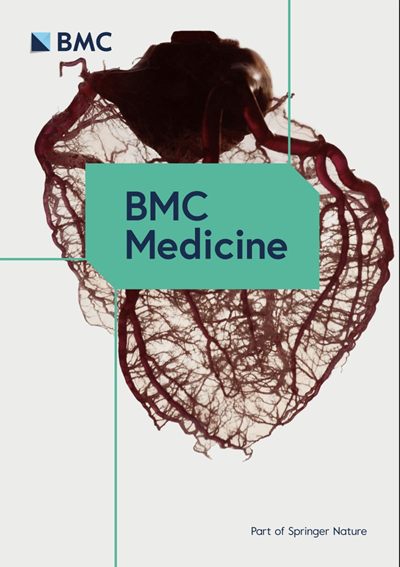中非共和国瓦姆省和瓦姆-彭代省受冲突影响地区的全面急性营养不良与地理、季节和疟疾发病率有关
IF 7
1区 医学
Q1 MEDICINE, GENERAL & INTERNAL
引用次数: 0
摘要
中非共和国(CAR)包括牧民在内的多个武装团体之间持续不断的冲突经常造成人口流离失所、粮食不安全和医疗服务匮乏。中非共和国许多地区交通不便且不安全,这限制了全国营养调查的数据收集和评估工作。由国际非政府组织 "导师行动"(The MENTOR Initiative)培训的社区保健员(CHWs)为生活在中非共和国西北部八个县难以到达和受冲突影响地区的五岁以下儿童提供基本的医疗保健服务。他们的营养状况及其与地理、疟疾、季节和冲突的关系尚不清楚。我们分析了中非共和国西北部八个县的保健工作者月度记录(2015 年 10 月至 2021 年 8 月)、武装冲突地点和事件数据项目的冲突数据以及世界银行集团的气象数据。采用负二项回归法研究了以中上臂围评估的全面急性营养不良(GAM)计数与疟疾、季节和冲突之间的关联。在 457325 名 6-59 个月大的就诊儿童中,分别有 6.2% 和 0.4% 的儿童被归类为中度或重度营养不良。负二项模型显示了各县 GAM 计数的差异。GAM 计数与重症疟疾病例率(IRR = 1.045;95% CI:1.04-1.06)和雨季(7 月至 9 月)(IRR = 1.10;95% CI:1.03-1.17)呈正相关。在 ACLED 中编码为战役的冲突事件与较低的 GAM 计数相关(IRR = 0.78;95% CI:0.62-0.97)。该分析表明了中非共和国西北部营养不良水平的地域差异,并证明了营养不良、季节和疟疾之间的明显关联。它提供的证据表明,在中非共和国西北部发生冲突的地区,GAM 的水平可能被低估了。这些研究结果突出表明,有必要为面临营养不良风险最大的儿童提供有针对性的营养支持。在难以到达的受冲突影响地区,儿童保健工作者是提供基本初级医疗保健服务的一种行之有效的手段。本文章由计算机程序翻译,如有差异,请以英文原文为准。
Global acute malnutrition is associated with geography, season and malaria incidence in the conflict-affected regions of Ouham and Ouham Pendé prefectures, Central African Republic
Ongoing conflict between multiple armed groups, including pastoralist herders in the Central African Republic (CAR) causes frequent population displacements, food insecurity and scarcity of healthcare services. The inaccessibility and insecurity of many areas of CAR limit data collection and assessments from national nutritional surveys. Community health workers (CHWs) trained by an international non-governmental organisation, The MENTOR Initiative, deliver basic healthcare to children under 5 years old living in hard-to-reach and conflict-affected areas in eight subprefectures of north-west CAR. Their nutritional status and its associations with geography, malaria, season and conflict are unknown. CHW monthly records (October 2015–August 2021), Armed Conflict Location and Event Data project conflict data and The World Bank Group meteorological data for eight subprefectures of north-west CAR were analysed. Associations between counts of global acute malnutrition (GAM) assessed by mid-upper arm circumference and malaria, season and conflict were investigated using negative binomial regression. Of the 457,325 consultations with children aged 6–59 months, 6.2% and 0.4% were classified as moderately or severely malnourished, respectively. The negative binomial model demonstrated differences in counts of GAM by subprefecture. Counts of GAM were positively associated with the case rate of severe malaria (IRR = 1.045; 95% CI: 1.04–1.06) and the rainy season (July–September) (IRR = 1.10; 95% CI: 1.03–1.17). Conflict events coded as Battles in ACLED were associated with lower counts of GAM (IRR = 0.78; 95% CI: 0.62–0.97). This analysis shows geographical differences in levels of malnutrition in north-west CAR and demonstrates clear associations between malnutrition, season and malaria. It provides evidence that levels of GAM may be underestimated in north-west CAR in areas experiencing conflict. These findings highlight the need for targeted nutritional support to reach children most at risk of malnutrition. CHWs are a proven effective means of delivering essential primary healthcare services in hard-to-reach, conflict-affected areas.
求助全文
通过发布文献求助,成功后即可免费获取论文全文。
去求助
来源期刊

BMC Medicine
医学-医学:内科
CiteScore
13.10
自引率
1.10%
发文量
435
审稿时长
4-8 weeks
期刊介绍:
BMC Medicine is an open access, transparent peer-reviewed general medical journal. It is the flagship journal of the BMC series and publishes outstanding and influential research in various areas including clinical practice, translational medicine, medical and health advances, public health, global health, policy, and general topics of interest to the biomedical and sociomedical professional communities. In addition to research articles, the journal also publishes stimulating debates, reviews, unique forum articles, and concise tutorials. All articles published in BMC Medicine are included in various databases such as Biological Abstracts, BIOSIS, CAS, Citebase, Current contents, DOAJ, Embase, MEDLINE, PubMed, Science Citation Index Expanded, OAIster, SCImago, Scopus, SOCOLAR, and Zetoc.
 求助内容:
求助内容: 应助结果提醒方式:
应助结果提醒方式:


